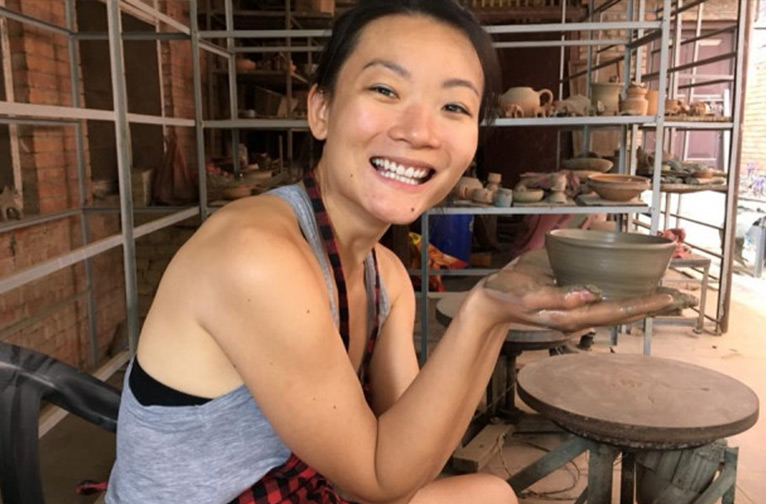With Nepal looking to meet the Sustainable Development Goals and graduate to a developed country by 2022, an intrinsic a part of this journey is going to be the promotion of the wealth of its artisanal heritage. The living traditions in Nepal’s cultural heritage are richly showcased in the arts and crafts which can be witnessed in its temples and palaces, and public spaces.
For the curious tourist browsing through souvenir shops, meeting local artisans and even learning a new life skill can be a truly rewarding holiday experience.
The glorious art of wood carving, in which Nepal’s Newar community has long been a master, is on view in the decorative pillars, doors and window frames, cornices and supporting struts of many historic structures around Bhaktapur’s Darbar Square. Shilpakars, one of the oldest clans in Bhaktapur, has long been renowned for their wood crafting skills. You can spend dinnertime at a Shilpakar’s home learning all about this amazing craft.
Don’t pass on the chance of learning all about the fine art of thangka painting in Kathmandu. In fact, under the guidance of a master painter in his art studio, you can create your own hand-painted thangka and take it home as a wonderful memory of your visit to Nepal. You will discover the spiritual and cultural significance of this classical art form in Nepalese and Tibetan paintings. The art form, inspired by ancient religious manuscripts, is steeped in symbolic importance and veneration.
The kukri, a symbol of pride and loyalty to Nepalis, is not only a weapon of war for the Gurkha soldier, it has multiple uses in Nepali homes in the rural landscape where it is also used for chopping firewood, building, digging and even cutting vegetables. Spend time at the local blacksmith workshop learning how to make your own kukri to take home as a new skill set.
The art of stone carving in Nepal has an over 2,000 year history. As you explore the local temples and historic monuments, you will witness amazing examples of this tradition. You can use your visit for a rare interaction with Nepali sculptor Jaya Raj Bajracharya who has attained world fame, taking on apprentices from many countries from around the world to keep this tradition alive. You can learn the basics of stone carving and create your own souvenir as an apprentice to this master artisan who hails from a family of 4th generation stone carvers.
Meeting up with the local weaving community opens up an excellent opportunity for you to understand the making of one of the world’s most exotic, luxurious, expensive and desirable articles of clothing. Once created for only the royals, today pashmina shawls can be bought from boutiques and stores even by the common man, who can afford them. Pashmina (cashmere) is wool (pashm) woven from the fibres from the undercoat of certain species of long-haired wild goats in the Himalayas. The soft wool is then hand spun into thin and even pashmina yarn, which is then hand woven into the loom. What’s even more fun is you get to try your hand at weaving one of these gorgeous wraps.


While wandering around Bhaktapur, you can’t miss the large ceramic water pots that are used by the locals. You may not be aware that this medieval a town has been the nucleus for pottery-making in the Kathmandu Valley from ancient times. Bhaktapur’s Bolachhen or Potter’s Square is an excellent spot to watch the artisans at work. Under the masterly guidance of third-generation master potter you will learn all about the background and history of pottery in the region but you might skill up on making two traditional forms of pottery–handmade and on the pottery wheel, that have been used by the local artisans. If you’ve got kids with you on the trip, this can be loads of fun for them as well!
Nepal offers even visitors an excellent opportunity to gain new skill-sets inspired by its incredibly rich handicrafts heritage. Next time come prepared to learn many more things about the country’s artisanal traditions which encourage you to try your hand at crafting these inspirational symbols of Nepalese culture.